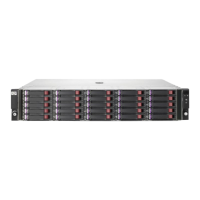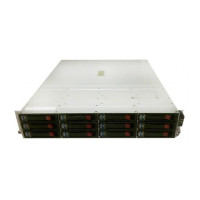Planning the MPX200 installation
Before installing the MPX200, it is important to define the requirements for iSCSI server connectivity.
You should consider present and future needs as they relate to the following MPX200 configuration
attributes:
• Simultaneous operation
• Total number of initiators
• Number of paths required per initiator
• Use of Internet Storage Name Service (iSNS)
• Use of iSCSI ports
• Load balancing
• 10-GbE initiators
You can configure the MPX200 to run up to two operations simultaneously in the following
combinations:
• iSCSI/FCIP
• iSCSI/Data Migration Services (DMS)
Table 2 describes the MPX200 supported configuration maximums for ports, blades, and chassis.
Table 2 MPX200 supported configuration maximums
Per chassis (2 blades
1
)
Per bladePer portConfiguration parameter
2,0481,024256iSCSI connections, 1-GbE model
4,0962,048
2,048
2
iSCSI connections, 10-GbE model
300300N/AInitiators, 1-GbE model
600600N/AInitiators, 10-GbE model
1,0241024N/ALUNs, 1-GbE model
1,0241024N/ALUNs, 10-GbE model
Up to 4 EVAs
3
Up to 4 EVAs
3
N/ATargets
1
For mixed-blade chassis configurations that include one 1-GbE blade and one 10-GbE blade, the supported
maximums are the 1-GbE values.
2
10-GbE ports only
3
For iSCSI connectivity
Total number of initiators
You can configure the MPX200 with a single blade or with two (redundant) blades. When using two
blades, the initiator is registered in both blades for consistency, whether or not you intend to access
both blades.
MPX200 Multifunction Router overview24
